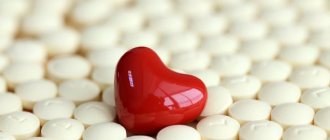Classification of hypersomnia
The classification of this pathology depends on the cause of its development. Based on the etiology, the following types of hypersomnia are distinguished:
- post-traumatic;
- psychophysiological;
- psychopathic;
- idiopathic;
- narcolepsy;
- associated with respiratory dysfunction during sleep and various somatic diseases.
According to clinical features, paroxysmal and permanent hypersomnia are distinguished. A feature of the paroxysmal form of this disease will be sudden attacks of drowsiness, regardless of external factors and circumstances. The phenomenon of paroxysmal hypersomnia is often a sign of cataplexy or narcolepsy. With permanent hypersomnia, patients complain of drowsiness and constant drowsiness during the day.
Forecast
The prognosis may depend on the cause of hypersomnia. Primary hypersomnia is treatable, but the condition can last a lifetime and have serious consequences. For example, a patient may refuse to drive if there is a risk that he may fall asleep while driving.
Patients with secondary hypersomnia may receive various forms of treatment for other conditions. When a doctor successfully treats the underlying condition, symptoms of hypersomnia may disappear.
Feeling tired or drowsy during the day is not always a cause for concern. Some people will experience sleepiness due to disrupted sleep patterns or staying up too late. However, those who regularly experience excessive sleepiness for no clear reason should consult a doctor. This consultation is especially important if symptoms interfere with social, work and family life.
Causes of hypersomnia
There are many reasons why this pathological condition develops.
Most often, the main etiological factors will be:
- various neurological, somatic, mental diseases;
- sleep phenomena (motor disorders during sleep, sleep apnea syndrome);
- traumatic head injuries;
- circadian rhythm disorder (as a result of transtemporal flights, shift work schedule);
- adverse events after taking medications;
- insomnia (insomnia), etc.
The cause of psychophysiological hypersomnia, as a rule, will be lack of sleep at night, so it can be observed in healthy people and is easily eliminated by normalizing the rhythm of life, as well as minimizing mental stress.
According to studies of the mechanism and causes of hypersomnia, it is known that most often it occurs against the background of narcolepsy. Narcolepsy often occurs as a result of an existing genetic disorder. In this case, expressive daytime drowsiness and episodes of involuntary, sort of forced, falling asleep occur.
- Quite often, hypersomnic conditions can occur due to neurological dysfunction. The most unpredictable course of increased sleepiness is the clinic of hysteria. With this disease, pathological sleep can last for a very long time, in some cases several days.
- Manifestations of hypersomnia associated with mild brain injuries are difficult to distinguish from clinical manifestations of mental disorders. Differential diagnosis consists of identifying pronounced structural changes in the brain that appear as a result of injury. The absence of such damage in hypersomnia indicates that the cause of this pathological condition will not be brain damage, but a stressful state caused by trauma.
- Another cause of hypersomnia can be depressive disorders.
- In some cases, drug therapy for various diseases becomes the cause of drug-induced hypersomnia; in particular, this form of increased drowsiness is included in the list of side effects when using some antihypertensive, hypoglycemic and psychotropic drugs.
- Insufficient duration of sleep at night against the background of insomnia, dysfunction of circulatory rhythms caused by shift work and various external factors often provokes sleep disturbances and the development of a hypersomnic state.
Based on the above, it is clear that hypersomnia has a polyetiological nature, and its diagnosis requires a systematic approach.
Symptoms of hypersomnia
The main symptoms of hypersomnia are regular or constant daytime sleepiness, combined with increased sleep duration at night. Often, with the disorder, night sleep lasts up to 12–14 hours, while it becomes difficult for the patient to wake up and get up on the alarm clock, and waking up itself takes a lot of time. Even after getting up, periods of lethargy continue, vaguely reminiscent of intoxication. This symptom is called “sleep intoxication.”
In addition, the disorder is accompanied by:
- headaches;
- dizziness;
- decreased concentration;
- irritability.
With hypersomnia, the patient suffers from daytime sleepiness, both constant and paroxysmal. This leads to a decrease in attention and performance, interferes with the performance of work and daily duties, and disrupts the normal rhythm of life. Sometimes patients feel better after a daytime nap, but more often the symptoms of hypersomnia persist, even if the person manages to sleep for a long time and repeatedly during the day.
Clinical signs of hypersomnia
The clinical manifestations of this pathology are directly related to the etiological prerequisites. However, among all the signs of hypersomnia, its main symptoms are highlighted, which are represented by periodic or stable sleepiness during the day and a long duration of sleep at night. Typically, nighttime sleep with hypersomnia takes 12-14 hours. Patients often complain of difficulty waking up, lack of response to alarm clocks, and an increase in the period from a sleepy state to full awakening. Therefore, some time after waking up, patients with hypersomnia may feel lethargic and drowsy. This condition resembles a clinic of intoxication; it is also sometimes found in the medical literature under the wording “sleepy intoxication.”
The phenomenon of daytime sleepiness, regardless of its nature, is often accompanied by a decrease in performance and attentiveness, which ultimately disrupts normal work activity, provokes a disruption in the normal rhythm of life and forces people to interrupt sleep during the daytime. Sometimes, after a daytime nap, patients may notice a relief in their general condition, but in the majority of cases, drowsiness remains the same.
Hypersomnia: clinical picture
The clinical picture of hypersomnia has characteristic symptoms, thanks to which it is possible to make a correct diagnosis in a timely manner.
The main signs of hypersomnia are as follows:
- periodic or constant daytime sleepiness with long duration of night sleep;
- increasing the duration of night sleep to 12-14 hours;
- difficulty waking up, inability to get up at the alarm;
- increasing the transition time from sleep to wakefulness.
For some time after waking up, patients with hypersomnia may remain lethargic and not fully awake. At the same time, their state resembles intoxication (“intoxication with sleep”).
Additional symptoms
In addition to the main symptoms, there are a number of clinical manifestations characteristic of certain diseases that cause hypersomnia. For example, with narcolepsy, patients may experience irresistible drowsiness and fall asleep even at the most inopportune moments. Over time, patients begin to sense in advance the approach of these attacks of forced drowsiness and take the most comfortable sleeping positions. Symptoms of this form of pathologically increased sleepiness also include hallucinations at the moments of falling asleep or waking up and awakening cataplexy, which is characterized by atony of the muscular system, as a result of which the patient loses the ability to carry out any movements for several minutes after waking up.
Psychopathic hypersomnia is characterized by an unpredictable nature of daytime sleepiness, the features of which are determined by specific psychopathology. Sleep can be quite long, but the results of a polysomnographic study indicate that the patient’s body is not in a state of sleep, and intense wakefulness is often detected on the electroecephalogram.
The phenomenon of idiopathic hypersomnia is most often characteristic of persons from 15 to 30 years old. This form of hypersomnia is manifested by difficulty waking up, constant drowsiness, in some cases, patients experience ambulatory automatism for several seconds.
If the reticular formation is damaged, as well as with epidemic encephalitis, lethargic sleep may develop, which is continuous sleep for 24 hours or more.
Symptoms
The main symptom of this disorder is periodic or constant sleepiness during the daytime with a long duration of sleep at night. Its duration increases to 14 hours. The awakening process is difficult. The transition from sleep to wakefulness is prolonged. The patient is lethargic after waking up; this state is similar to intoxication.
It is called "sleep intoxication." Daytime drowsiness is constantly present or occurs spasmodically. The patient's performance and attentiveness are reduced, which prevents full-fledged work activity. Hypersomnia makes everyday life difficult and forces you to interrupt your sleep during the day. Drowsiness often persists even if the patient sleeps several times during the day.
Diagnosis of hypersomnia
Making a correct diagnosis for hypersomnia requires a complex of diagnostic procedures, since it is very important to clarify the form of hypersomnia and its etiology; this is the only way to prescribe appropriate therapy. Therefore, in addition to a standard neurological examination and history taking, a number of additional studies may be required, and in some cases it is advisable to involve additional specialists (traumatologist, psychiatrist, ophthalmologist, cardiologist, gastroenterologist).
In the process of collecting anamnesis, attention is focused on the presence of genetic diseases, recent head injuries, concomitant pathologies, as well as the general rhythm of life of the patient.
Additional methods for studying hypersomnia include specific tests (sleep latency test, Stanford School of Sleepiness).
An important diagnostic role in identifying pathologically increased sleepiness is to perform a polysomnographic study. Polysomnography allows you to clarify the form and features of the clinical course of hypersomnia.
It is also important to differentiate hyposomnia, which has developed against the background of other pathologies, from increased drowsiness with an organic etiology (as a result of asthenia, chronic fatigue syndrome, depression), since this is the only way to prescribe optimal therapy. Such differentiation often involves echo-EG, CT of the brain, ophthalmoscopy, etc.
Hypersomnia: diagnosis
At the Yusupov Hospital, generally accepted tests are used to diagnose hypersomnia: the Stanford Sleepiness Scale and the sleep latency test.
In addition, an important step in diagnosing this disease is polysomnography.
Differential diagnosis of hypersomnia should be carried out with such diseases as:
- asthenia;
- depression;
- chronic fatigue syndrome.
In order to exclude the organic nature of pathological drowsiness, specialists at the Yusupov Hospital carry out:
- neurological examination;
- consultation with an ophthalmologist with ophthalmoscopy;
- Echo-EG;
- MRI or CT scan of the brain.
Identifying the connection between hypersomnia and the presence of a somatic disease may require additional consultation with a cardiologist, endocrinologist, neurologist, neurosurgeon, etc.
Treatment of hypersomnia
Treatment of hypersomnia has a direct relationship with the accuracy of diagnostic results and elimination of the underlying disease. In some cases, the disease that causes hypersomnia cannot be completely cured, then therapeutic tactics are aimed at minimizing symptoms that negatively affect the patient’s quality of life.
An important point in the fight against this pathological condition will be the normalization of sleep patterns. Patients need to abandon the daily work schedule and go to bed at the same time. You also need to include 1-2 times of daytime sleep in your daily schedule, while the duration of night sleep should not be more than 9 hours. To achieve positive results in the treatment of hypersomnia, it is necessary to stop drinking alcohol, exclude heavy foods from the diet (too fatty, smoked) and try to avoid eating immediately before going to bed.
Drug therapy for a hypersomnic state involves the use of the following stimulant drugs:
- propranolol;
- modafinil;
- dextroamphitamine;
- mazindol.
For cataplexy phenomena, patients are prescribed antidepressants:
- viloxazine;
- clomipramine;
- protriptyline;
- fluoxetine, etc.
After all therapeutic measures have been implemented, the patient must be provided with dynamic monitoring, since hypersomnia is prone to relapses.
Treatment
Various medications are used to treat sleep disorders. To restore normal sleep structure, short-term drug therapy is preferable. Typically, sleeping pills are prescribed for 2 weeks or less. For chronic insomnia, longer courses of sleeping pills may be prescribed, which require long-term monitoring to ensure continued appropriate use of the medications.
- Barbiturates and chloral hydrate are rarely used today because these drugs have a low therapeutic index.
- Drugs that block histamine type 1 receptors have some effect but, nevertheless, due to the anticholinergic properties of these drugs, they should be used with caution in elderly patients and patients who have diseases such as prostatic hypertrophy, cognitive disorders and constipation. In addition, most of these drugs have a long duration of action, and their sedative effects may also persist into the next day.
- Zolpidem and zaleplon are new and perhaps the safest substances available for short-term use. In addition, a drug such as Eszopiclone is recommended as the first drug for long-term use in the treatment of chronic insomnia.
- Tasimelteon (Hetlioz) melatonin drug restores circadian rhythm and has few side effects
- Suvorexant (Belsomra) was approved by the FDA in August 2014 and is the first orexin receptor antagonist for insomnia. It is indicated for the treatment of insomnia, which is characterized by difficulty initiating and/or maintaining sleep. The orexin neuropeptide signaling system is a central promoter of awakenings. Blocking orexin receptors improves the quality of sleep and falling asleep.
Diet
- No special diet is required to treat insomnia, but fatty, rich and spicy foods should be avoided 3 hours before bedtime. Patients should avoid substances such as alcohol, nicotine and caffeine. Alcohol creates the illusion of good sleep, but it negatively affects sleep structure. Nicotine and caffeine stimulate the nervous system and should be avoided in the afternoon. Eating tryptophan-containing foods may help induce sleep; a classic example is warm milk.
- Exercising during the day can help improve sleep, but exercising within 3 hours before bed can itself initiate initial insomnia.
Acupuncture and various physiotherapy procedures can be quite effective in the absence of somatic causes of sleep disorders.
Prognosis of hypersomnia
The prognosis, as well as the treatment of a hypersomnic state, depends on the cause of its development. For example, with post-traumatic hyposomnia in most cases it is favorable; very often increased drowsiness disappears upon completion of treatment and rehabilitation of the patient. With narcoleptic hypersomnia, as well as organic brain lesions, the prognosis is less favorable. Hypersomnia itself is not a fatal pathology, but it significantly increases the risk of injury, since the patient can fall asleep at any moment.











